5 science-backed dietary changes that may have an impact on your child’s ADHD
As a parent to a child with ADHD it’s only natural that you want to give them the best chance at a normal life, and providing them with a nutrition plan rich in fruits, vegetables, healthy fats, protein and vitamins might help control some symptoms of attention deficit hyperactivity disorder. Even if it doesn’t, you can rest assured that your child is eating a balanced and healthy diet.
Certainly, there are many parents who report that certain foods can aggravate their child’s ADHD symptoms and some can work to improve them, and that with modest dietary changes they are able to supplement their child’s standard ADHD treatment e.g.behavioral therapy and medication.
These are five dietary changes that might have an impact on your child’s ADHD. If you believe a particular food or ingredient could be aggravating your child’s symptoms, eliminate it from their diet to see if it makes a difference. Remember, not all children are the same. What might work for another child may not work for your child.
- Reduce intake of artificial additives
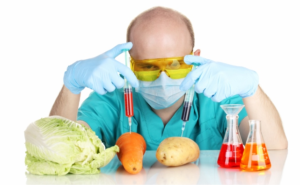
Since the 1970s, researchers have investigated whether the synthetic dyes, flavors, and preservatives found in many processed or junk foods might contribute to hyperactivity or other symptoms of ADHD.
Harvard Medical School reports that a research study in the UK found additives could explain about 10% of the behavioral difference between a child with ADHD and one without the disorder, and an earlier meta-analysis conducted by researchers at Columbia University and Harvard University found that removing these agents from the diets of children with ADHD would be about one-third to one-half as effective as treatment with methylphenidate (Ritalin).
It is, however, reported in both cases that only a minority of children are particularly vulnerable to the effects of artificial additives. Nevertheless, the American Academy of Pediatrics agrees that eliminating additives including aspartame, MSG (monosodium glutamate), nitrites and the preservative sodium benzoate from the diet is a reasonable option for children with ADHD.
According to the Mayo Clinic, the European Union (EU) requires that foods containing certain food color additives include a statement on the label that this color “may have an adverse effect on activity and attention in children.” The FDA, on the other hand, only requires that FDA-certified color additives be listed on the food label.
Tip: To find out if artificial colors and additives are contributing to your child’s behavior, try eliminating the main sources of these ingredients— candy, junk food, brightly-colored cereals, fruit drinks, and soda — from your child’s diet for a few weeks, to see if symptoms improve.
- Reduce sugar intake
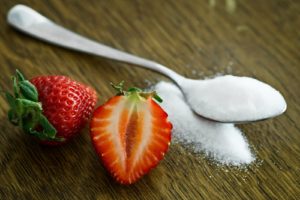
While eating sugary foods can cause blood glucose spikes and crashes which can affect energy levels, the direct effects of sugar on children’s hyperactivity, attentiveness and behaviour are not fully known.
Some studies state that sugar consumption does not cause hyperactive behavior, and an often-cited study found no effect on behavior or ability to concentrate when sugar intake was far above normal. However, other studies have found excess sugar to promote ADHD symptoms, namely hyperactivity.
Soda and energy drinks are a no-no for ADHD children. These drinks are loaded with high-fructose corn syrup and caffeine, both of which can possibly cause symptoms of hyperactivity and easy distractibility. A 2013 study found that 5-year-old children who drank sodas were more likely to show aggression and social withdrawal.
Despite the inconclusive results on the effect of sugar on ADHD symptoms, there’s no denying that too much sugar is unhealthy. Too much sugar contributes to weight gain and other health problems, such as heart disease and type 2 diabetes.
- Load up on omega-3 fatty acids
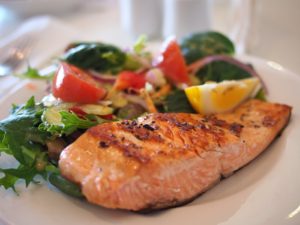
These are the healthy fats that you often hear about, found in salmon, tuna, anchovies, mackerel, herring, sardines, trout, shrimp and bluefin and albacore tuna, as well as in flaxseeds and many nuts, especially walnuts.
Our bodies cannot make essential fatty acids, so these nutrients must be consumed in our diet.
Essential fatty acids fuel basic cell functioning, improve overall immunity, and enhance heart health. Critically for ADHD sufferers, these fatty acids perform a number of functions in the brain, such as affecting transmission of the neurotransmitters dopamine and serotonin and helping brain cells to communicate. Therefore, intake of omega-3 fatty acids – or rather lack of it – has been the subject of a number of studies. Some findings suggest that omega-3 fish oil supplements may improve the mental skills of 8-12 year old children.
Fish is also a rich source of protein which can have beneficial effects on ADHD symptoms. Protein-rich foods are used by the body to make neurotransmitters, the chemicals released by brain cells to communicate with each other. Protein can prevent surges in blood sugar, which increase hyperactivity and impulsivity.
Tip: Whether or not omega-3 fatty acids help reduce the symptoms of ADHD, children should be encouraged to consume sufficient levels of mercury-free omega-3 fatty acids as part of a healthy diet. For children, that means consuming about two meals a week containing omega-3.
- Increase zinc intake
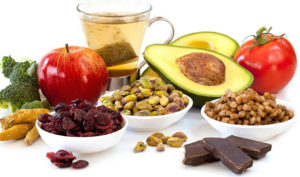
Some studies suggest that children with ADHD may have lower levels of zinc in their body, and increasing their zinc intake—whether through food or supplements—along with traditional ADHD treatment can improve their symptoms. A 2005 study in the Journal of Child and Adolescent Psychopharmacology reported a link between zinc levels and teacher- and parent-rated inattention in children. Foods high in zinc include oysters and other seafood, red meat, poultry, dairy products, beans, nuts, whole grains, and fortified cereal.
Check with your doctor before you give your child any supplements however, as taking too much of some supplements can be toxic.
- Promote healthy snacking
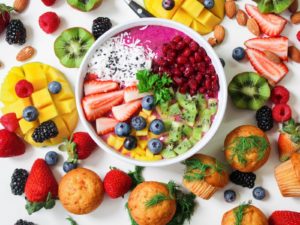
Too many snacks are loaded with sugar, even some that can appear healthier such as flavored instant oatmeal packages. The problem is, high-sugar snacks are easy to access and they are convenient. These quick tips can help promote healthy snacking with your children.
- Find alternatives to unhealthy snacks e.g. replace potato chips with pan-popped popcorn or pretzels, switch out candy for trail mix etc.
- Don’t keep junk food in your home and avoid the temptation to reach for an unhealthy snack for you and your child. It’s important that you set a good example for them to follow.
- Stock plenty of fruits and veggies in the fridge, already sliced, to satisfy your hungry child.
- Schedule regular meal and snack times, as routine is important for children with ADHD.
- Do not skip meals, as this could lead to blood sugar crashes and excessive junk food consumption.
This table summarizes the dietary changes explored in this article:
| Increase | Reduce |
| Omega-3 fatty acids, found in salmon, tuna, anchovies, pollak mackerel, shrimp, herring, sardines, trout, and bluefin and albacore tuna, flaxseeds and nuts, especially walnuts. | Artificial additives, found in candy, junk food, brightly-colored cereals, fruit drinks, and soda |
| Zinc, found in oysters and other seafood, red meat, poultry, dairy products, beans, nuts, whole grains, and fortified cereals. | Sugar, found in many foods, but particularly prepackaged fruit-flavored snacks, ice cream, candy bars, cookies, and other sweets, cereal marketed to children etc. |
| Healthy snacks – fruit (real, dried, or in something like a smoothie), diced and sliced vegetables with hummus, fresh salsa or yogurt dip, whole-grain, high fiber cereal or oatmeal with banana, fresh berries or nuts. |
A healthy diet for any child – not just one with ADHD – should consist of:
- Fruits and vegetables
- Whole grains (found in specific cereals and breads)
- Protein (meat, beans, peas, nuts, and diary)
- Monounsaturated fats (avocado, seeds, nuts, olives, canola, olive, and peanut oils)
- Polyunsaturated fats (corn, sesame seeds, soybeans, legumes, and sunflower oils)
- Omega-3 fatty acids (covered above)
- Calcium-rich foods (dairy milk, yogurt, cheese, flax milk, almond milk, soy milk, broccoli, beans, and dark leafy greens)
- Complex carbohydrates (vegetables and some fruits, including oranges, tangerines, pears, grapefruit, apples, and kiwi)
As a rough guide, when preparing a meal for your child, half of the plate should be filled with fruits or vegetables, quarter with a protein, and quarter with carbohydrates.
While diet alone doesn’t cause the behavioral and cognitive symptoms commonly associated with ADHD, there’s no denying that diet does play a crucial role in a child’s overall physical and mental health. A healthy diet may reduce symptoms of ADHD by reducing exposure to artificial colors and additives and improving intake of omega-3 fats and certain vitamins and minerals, however without a doubt, fueling your ADHD child with healthy, nutritious food will go a long way toward helping them cope with their challenging diagnosis, and healthy dietary habits that begin in childhood can last a lifetime.




